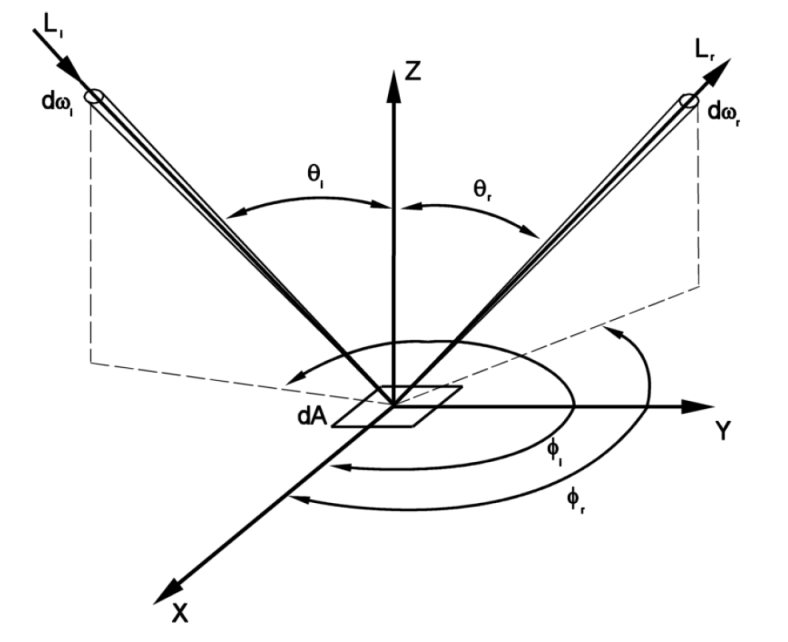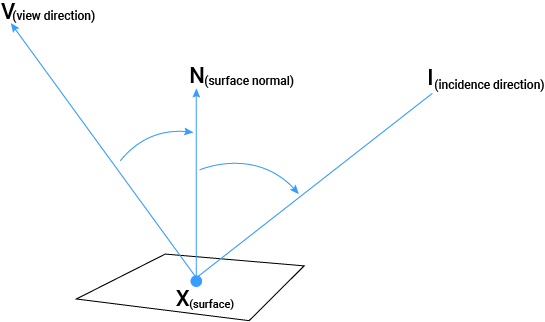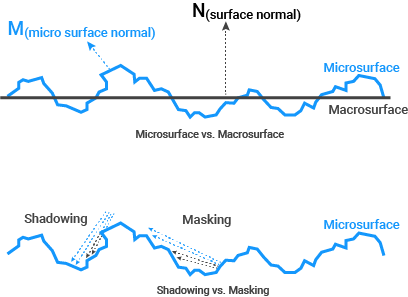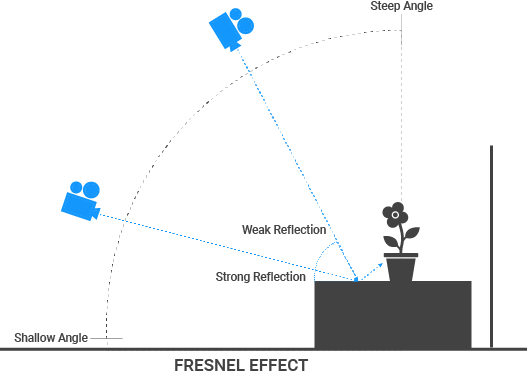BRDF Models
BRDF is an acronym for “Bidirectional Reflectance Distribution Function,” and is a mathematical description called a function that describes how light reflects from an opaque surface. There are several related functions to BRDF, and a quick online search for the term “BRDF” will return figures that look like the figure below:

**
or this:
These figures can also be represented as mathematical equations as we can see here:

COMPONENTS OF BRDF
BRDF, in more detail, is a function defined as the ratio of the reflected light (radiance energy) to the incoming light (irradiance energy) at the point “x” on the surface.

BRDF deals with the directional distribution reflection of light from any surface. It does not deal with the light rays that penetrate into a surface (absorbed) and must obey with the basic laws of physics in order to give realistic results.
ENERGY CONSERVATION
Energy conservation must be ensured in any system. Accordingly, for all possible directions, the total energy of the light reflected from a surface can never be more than the total energy of the incoming light. The topic is discussed in a little more depth here.
NON-NEGATIVITY
The reflection value must be between 0 and 1 because of the conservation of the energy principle. Therefore, the ratio of the reflected light (radiance energy) to the incoming light (irradiance energy) must be between 0 and 1. BRDF also includes this ratio with the cosine term. That is, the range of BRDF is 0 to infinity. Also, both radiance and irradiance values cannot be negative.
RECIPROCITY
Also known as Helmotz’s reciprocity law, the BRDF value must not change when the incoming vector and the outgoing (view) vector are interchanged. In other words, when the travel of the light reflected from the surface is reversed, the light must follow the same path and the BRDF must be the same in both cases.
MICROFACETS THEORY
Microfacet theory is a technique developed to approximate the roughness or imperfection of every surface in the real world (let’s call it Roughness) and is applied in cooperation with occlusion methods called shadowing and masking. In realistic BRDF models, the surface is considered to be formed from uneven grooves (microfacets). Microfacet is calculated by how much of the ratio is due to masking and shadowing of interaction with the light.
The masking state is when the light is reflected by one surface of the microfacet, then the reflected portion is blocked by the other “microfacet”. Shadowing is the case where the light is blocked by the other “microfacet” before it reaches the surface of the “microfacet”.

FRESNEL EFFECT
BRDF also incorporates the Fresnel Equation, which is how surface reflection varies according to the observed angle and the surface IOR (Index of Refraction) values. For example, if you look at the plant pot on a reflective table in orthogonal direction (steep angles), you will see a weak reflection. But if you move closer to the Shallow Angle (grazing angle), you will see stronger reflections.

ISOTROPY AND ANISOTROPY BRDF
For many materials, if the direction of the light and the view direction are fixed, the reflection does not change as the material is rotated around the surface normal. These properties are called isotropic materials. Examples of isotropic materials include metals, plastics, and painted surfaces.
Anisotropic surfaces, on the other hand, change their reflectance values by rotating the surface around its normal, in contrast to isotropic surfaces. Examples of anisotropic surfaces are metal brushes, polished metal, human hair, fur, velvet, and wood.
SOURCES:
If you wish to learn more, follow these links:
An Overview of BRDF Models - here
Wikipedia page about BRDF - here
About microfacet method (warning, load time can be long) - here
BRDF for computer Graphics - here
Wikipedia page for Fresnel Equations - here

